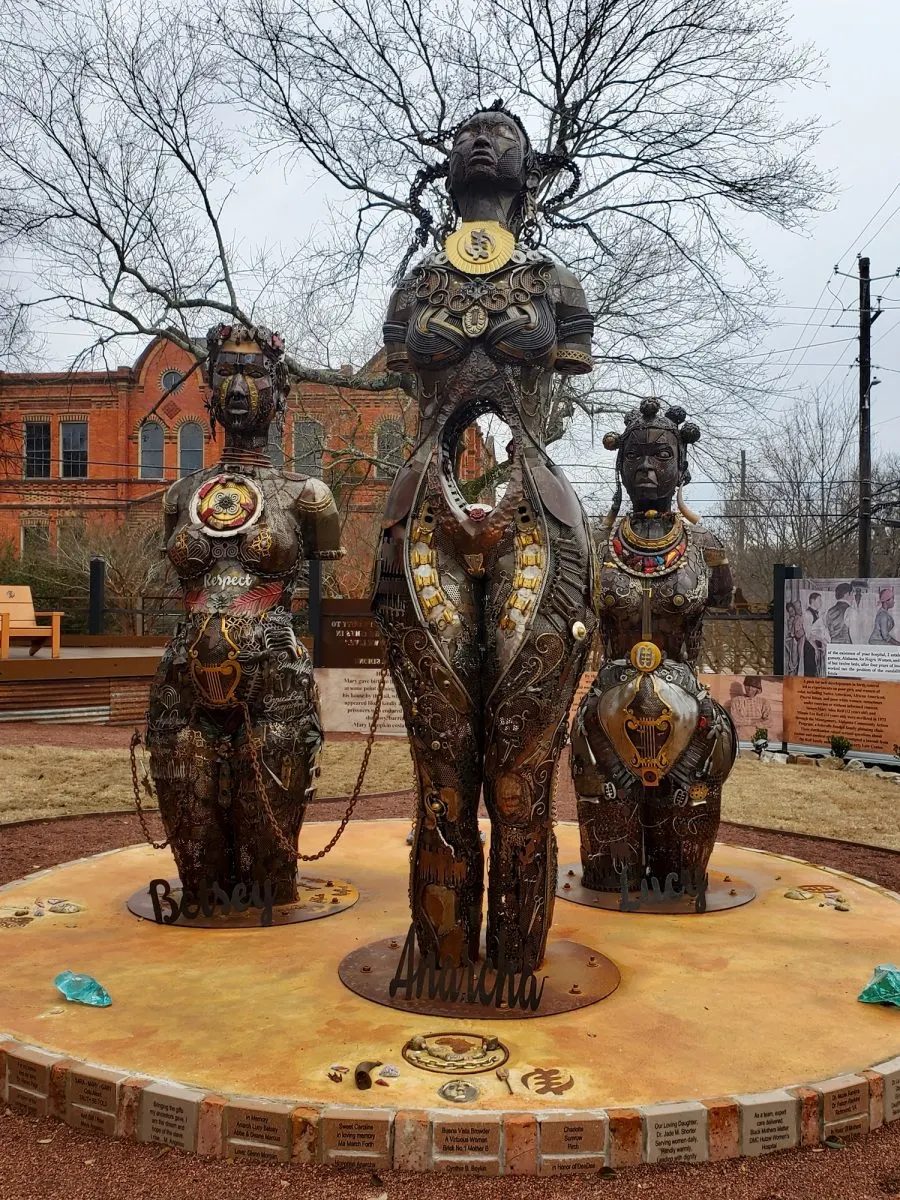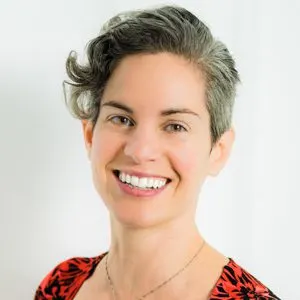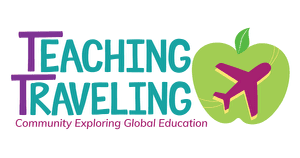Interested in a funded 5-day study tour for educators to learn about African-American history in Georgia and Alabama? Find out more about this incredible grant from a recent participant, Kate Ehrlich!
Teaching Traveling: Kate, tell us about your background in teacher travel grants.
Kate: Hello! I am a history and social studies teacher at a high school near Frederick, Maryland. This is my 17th year teaching, and I have participated in several educator tours, domestic and international, in recent years. Last summer, I was interviewed by Lillie Marshall on this site about my experience on the Uberoi Foundation’s tour of India, a travel grant focused on helping educators teach about India’s dharmic religions.
I’m looking forward to a tour of Korea in June, which has been postponed three times due to the events that began in 2020. I’m open to any educator tour or professional development for teachers that will enhance my instruction, deepen my content knowledge, or help me reach more students.

TT: Tell us about the Truth and Purpose Learning Experience.
K: I recently attended the Institute for Common Power’s Truth and Purpose Learning Experience for Educators. From February 9 – 13, several educators from around the country traveled to Atlanta, Georgia and Montgomery, Birmingham, and Selma, Alabama to learn more about African American History. The experience was open to educators who teach all disciplines and grade levels.
We were led by Dr. Terry Anne Scott and Dr. David Domke and accompanied by Civil Rights legends Charles Mauldin and Bob Zellner. This was the Institute for Common Power’s second tour for educators—the first was this past fall. They are having another in May, and the application is currently open.
Participants were presented with some guardrails to guide our journey and ensure that our discussions were productive. One of these was that “growth and learning often requires discomfort.” This was not an emotionally easy trip.
We heard a lot about moments in our history and present that are uncomfortable and painful, but we benefited from having experts and travel companions with whom we could debrief and ask questions. This is an excellent opportunity for those who want to make their instruction more inclusive and promote equity in their classrooms.

TT: Amazing. How do you find your travel opportunities?
K: I hear about most of the experiences in which I participate from other educators on travel tours and from Facebook. Groups, like “Scholarships, Grants, Summer Institutes, and Other Opportunities for Educators,” provide me with information about upcoming experiences. This giant spreadsheet of teacher travel grants by Andi Webb is also a fabulous resource, and is frequently updated.
TT: How did funding for the Truth and Power program work?
K: The expenses of this trip were entirely covered with the exception of our flight to and from Atlanta. All meals, local travel, admission fees, and accommodations were covered. They fed us very well and made a concerted effort to patronize Black-owned restaurants and businesses on the trip. Including the flight, my total cost was less than $600.

TT: Wow! Tell us one moment from your travels that was particularly powerful.
K: On the trip, we heard directly from individuals involved in the struggle for African American rights (past and present), including Charles Mauldin, Bob Zellner, Bernard Lafayette, Joanne Bland, T. Marie King, Michelle Browder, Hank Stewart, and the mayor of Montgomery, Steven Reed. These interactions were the most impactful of the trip.
Hearing about “Bloody Sunday” from two people who attempted to cross the Edmund Pettus Bridge that day and the dangers of organizing in the South from a civil rights activist who was almost lynched for his efforts, gave us insights into the movement we could never get from a textbook.

In two other powerful, related moments, we were taught about J. Marion Sims, a “doctor” who experimented on enslaved Black women without anesthesia or regard for their well-being. He is known as the “Father of Gynecology.” Common Power employee and graduate student, Jordyn Schulte, explained his story while we viewed a monument to him on the grounds of the State Capitol in Alabama.
Michelle Browder, an artist in Montgomery, explained in detail her process of creating “The Mothers of Gynecology” monument to honor the women exploited and abused by Dr. Sims. This is information often excluded from mainstream texts. I
know that when I discuss ethics and experimentation in my own AP Psychology classes, this will be an example I can use with students. I can also pull from what I learned to help explain the current disparities we see between African Americans and other racial groups in America’s healthcare system.

While in Montgomery, we also visited the Equal Justice Initiative’s Legacy Museum: From Enslavement to Mass Incarceration and the accompanying Lynching Memorial. As an educator, the interactive museum provided a great deal of information about the history of African Americans in the United States, as well as primary sources and other resources I can use with students to enhance my instruction.
Following this experience, I created a unit plan about the challenges faced by African Americans in the period after Reconstruction and during the Progressive Era, which I believe is an area of weakness in our curriculum. It was helpful to hear my travel companions explain their reaction to the museum and discuss how we could use what we learned in our own classrooms.
There were so many significant moments in this five-day trip that it’s hard to believe it was such a short experience! Luckily, our leaders are finding ways to keep us connected and learning from each other moving forward.

TT: How have your travels impacted you in your career, and as a person?
K: I’ve never participated in a study tour that didn’t make me a better teacher in some way. I find that visiting new places and learning about other cultures helps me better meet the needs of all my students. This particular trip has inspired me to learn more about African American history in the district where I teach and brainstorm ways to bring this content into my classroom.
As African American history and discussions of race come under fire in other parts of the country, I am lucky to live in a place where students are encouraged to learn about history from multiple perspectives. It’s the responsibility of all educators to make sure that the content we teach is honest, inclusive, and relevant for students.
TT: What advice do you have for teachers yearning to travel?
K: There are barriers that prevent teachers, particularly those with young children, from participating in study tours. This experience is ideal for educators who may hesitate to be away from home for long periods of time. It takes place within a five-day period and is located within the United States, which makes it more accessible than many other tours.
I firmly believe that educator travel is the most useful professional development a teacher can experience. If only all professional development experiences were so meaningful and had such a direct impact on instruction! I would recommend that individuals assess their own comfort levels and experience related to travel and select tours that will meet their needs.
There is nothing wrong with starting small before considering a long-term experience in a foreign country. Teachers need to think long and hard about what conditions they can handle (temperature, food, access to technology, hygiene) and how they get along with others. It is key to apply for experiences that you can handle physically and emotionally while also challenging yourself to grow as an educator.
TT: Thank you, Kate! Readers, what questions do you have?

The author, Lillie Marshall, is a 6-foot-tall National Board Certified Teacher of English from Boston who has been a public school educator since 2003. She launched TeachingTraveling.com in 2010 to share expert global education resources, and over 1.6 million readers have visited over the past decade. Lillie also runs AroundTheWorld L.com Travel and Life Blog, and DrawingsOf.com for educational art. Do stay in touch via subscribing to her monthly newsletter, and following @WorldLillie on social media!
